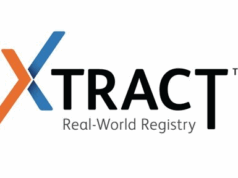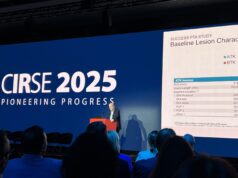
A US Food and Drug Administration (FDA) advisory panel has recommended against premarket approval of BD’s Lutonix 014 drug-coated balloon (DCB) for use in below-the-knee (BTK) arteries. In a meeting on 17 February, the majority of the FDA Cardiovascular Devices Panel concluded that the device was likely safe in BTK arteries, but not effective. The benefit-risk ratio also did not appear favourable for the Lutonix 014 DCB, it claimed.
Prior to the meeting, the FDA released an Executive Summary of the premarket approval application for the Lutonix 014 for the treatment of patients with critical limb ischaemia (CLI) who have obstructive de novo or non-stented restenotic lesions in native popliteal, tibial, and peroneal arteries up to 320mm in length and 2–4mm in diameter.
In the document, they detail results of the Lutonix BTK investigational device exemption (IDE) pivotal study on which they based their conclusions. This was a prospective, multicentre, 2:1 randomised controlled trial comparing the Lutonix 014 DCB (test group) to PTA (control group) for the treatment of BTK arteries. The study was terminated after enrolling 507 of the prespecified 840 vessels.
The FDA summarised the outcomes of the study: “The Lutonix 014 DCB met the non-inferiority primary safety endpoint at 30 days. The primary effectiveness endpoint results did not reach statistical significance, although a 10.5% improvement was noted at six months. However, a durable benefit was not seen at later timepoints, with the KM [Kaplan-Meier] curves converging at 12 months and primary effectiveness event rates favouring the PTA group thereafter.”
Looking in more detail at the benefits and risks, the FDA has not found any safety concerns with this device for this indication from the data provided: “To date, the FDA has not noted any safety concerns associated with the use of the Lutonix 014 DCB that would be expected to exceed those of current standard of care with non-drug containing devices. While a safety signal for increased mortality was noted for the use of paclitaxel-coated devices in the superficial femoral artery, this trend was not evidenced in the current study in the BTK anatomy.”
However, they express concern regarding effectiveness: “A modest benefit in regard to the primary effectiveness endpoint compared to PTA can be seen at six months, but a reversed outcome was noted at 12 months and beyond. Both prespecified and post hoc secondary endpoint effectiveness evaluations did not demonstrate a clear benefit of the Lutonix 014 DCB versus PTA.”
“Overall, the study was terminated early and did not meet the prespecified hypothesis test success criteria. It remains unclear whether the effectiveness differences at six months are clinically meaningful, and that the benefits of the paclitaxel-coated Lutonix DCB outweigh the risks compared to treatment with an uncoated balloon for treatment of atherosclerotic lesions below the knee,” they conclude.













